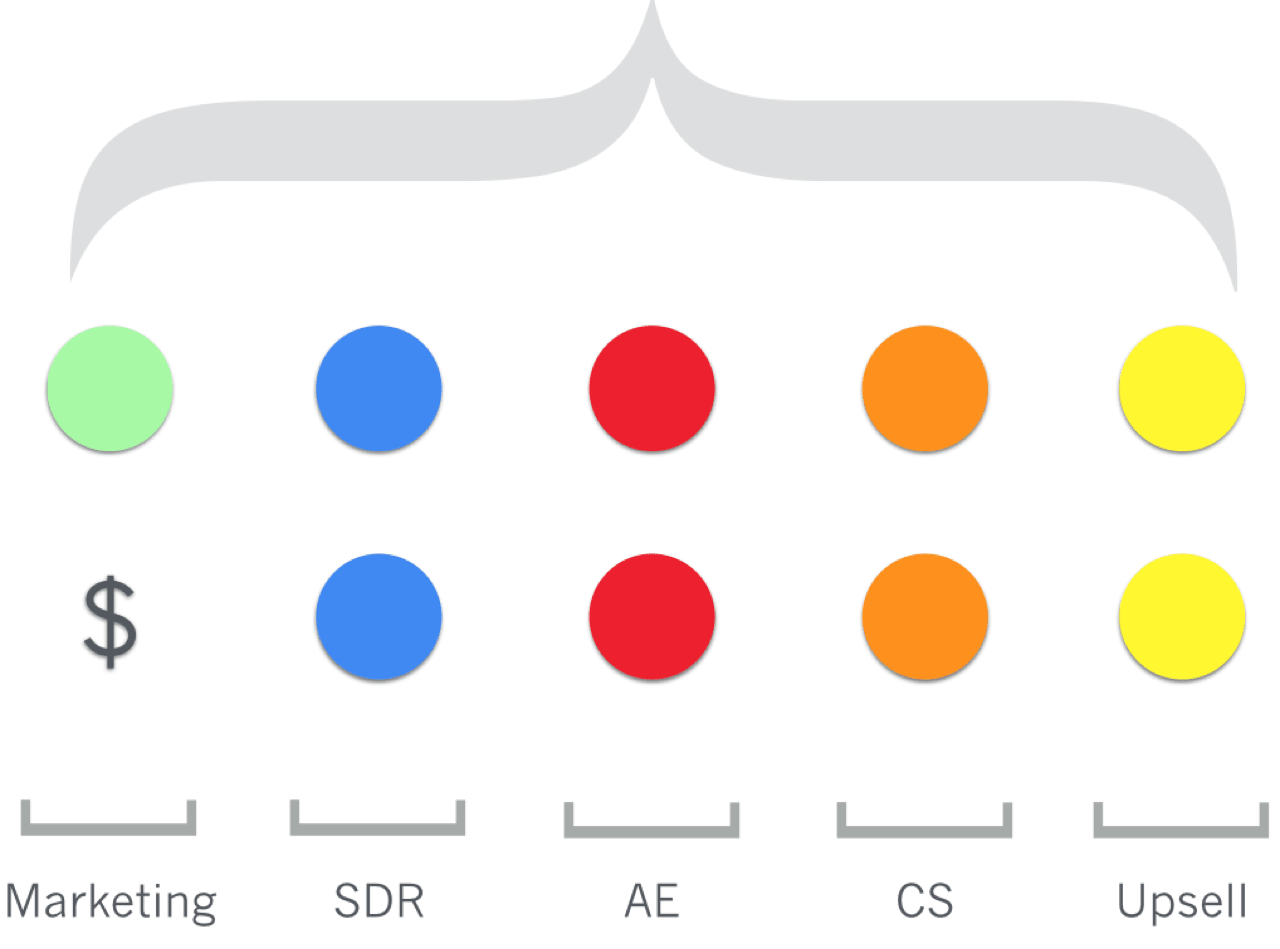2 minute read / Nov 25, 2014 /
The Fundamental Unit of SaaS Growth
After your SaaS startup has found product market fit, the next evolution of the business is to discover the fundamental unit of SaaS growth. A fundamental unit is the atomic go-to-market team: the minimum number of people in the marketing, sales and support roles to be able to support X customers and generate Y in revenue.
At the point that a startup has discovered their fundamental unit, time, cash and execution become the limiting factors of the business. Most of the other risks in a company’s path have been mitigated. In other words, it’s time to raise a growth round to scale the business.
The key members of a fundamental unit are depicted above. These are the questions when determining the composition of a fundamental unit: How many marketing team members and how much marketing spend are required to create enough leads to feed a Sales Development Rep (SDR) who tees up meetings for an Account Executive (AE) to close? Once the AE has closed the customer, how many Customer Success (CS) managers are required to keep customers happy and how many Upsell reps must be staffed to generate negative churn?
Each startup’s fundamental unit will vary in its particular ratios. Below are the ranges I’ve seen for these ratios, but keep in mind, there’s lots of variability for different types of businesses (SMB vs Enterprise, Word of Mouth vs Outbound customer acquisition, etc):
- Marketing: quite variable; it depends on the main customer acquisition channels of the business.
- SDR to AE: varies from 1:1 to 1:3, depending on lead volume and lead qualification rates
- CSM per Customer: one industry rule of thumb is 1 CSM per every $1-2M of ACV. But this figure varies. Companies with smaller Average Revenue per Customer and less developed products will need to staff larger ratios of CSMs.
- Upsell Executives per AE: this figure varies by company revenue size from about 1:8 to 1:3 according to data from the 2014 PacCrest survey
Once a company has figured out the math, namely the ratios of people in each role and total spend, the business must transition into hiring, onboarding and managing as many fundamental units as quickly as possible. And at this point, the company knows precisely the revenue contribution and cost of each team. In other words, just add cash to grow.

